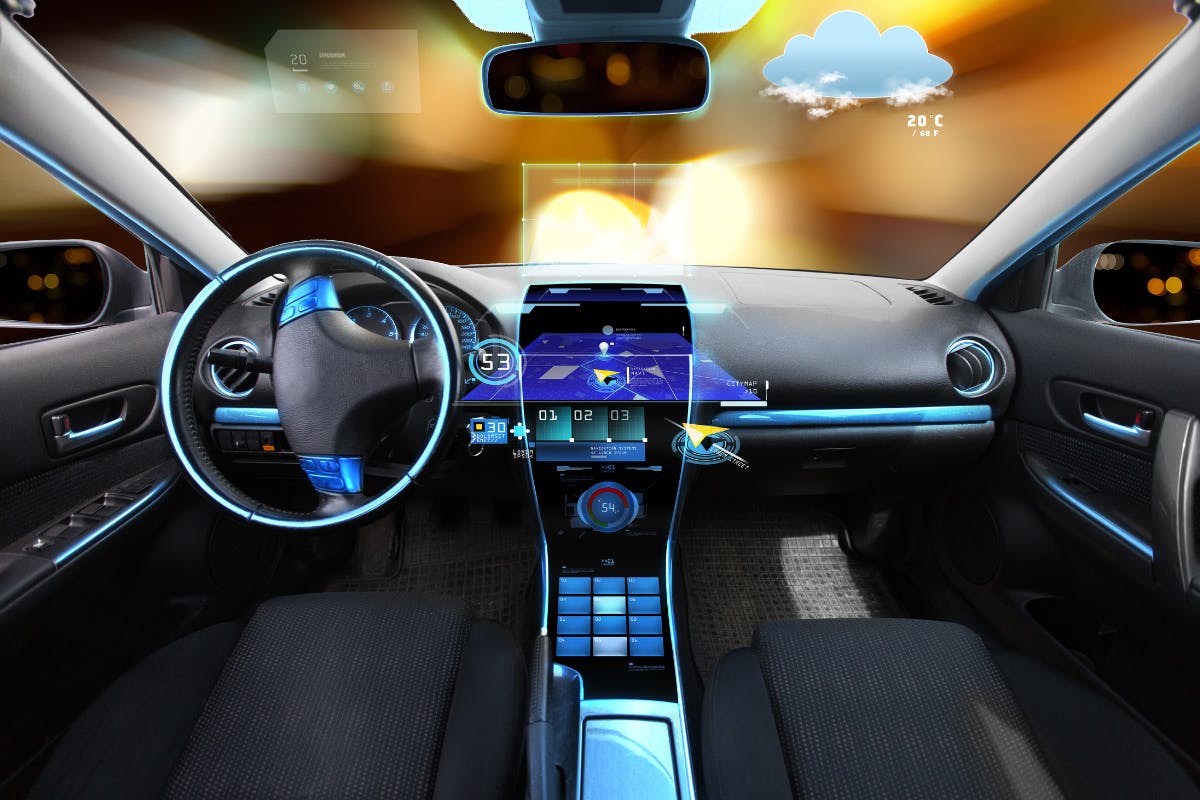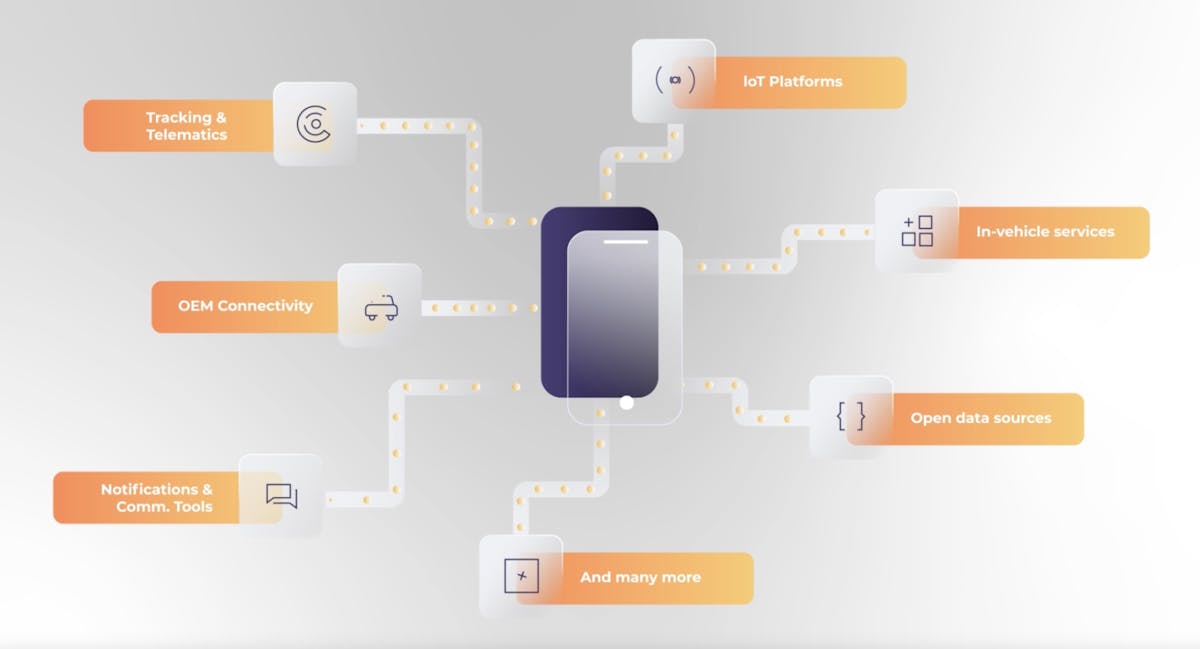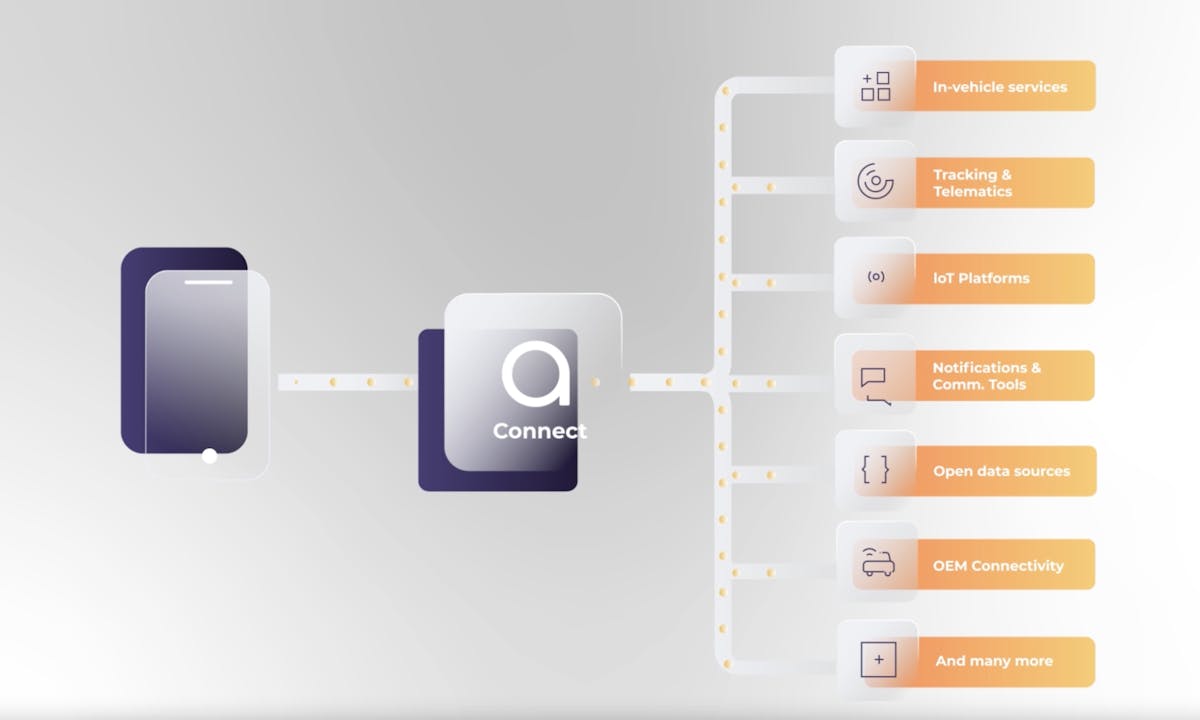Navigating the Revolution of Connected Vehicles: A Strategic Guide for Businesses

In the last decade, connected mobility has transitioned from being a futuristic concept to becoming a tangible reality. At the heart of this transformation are connected vehicles, devices that not only offer conveniences to drivers but also provide unprecedented opportunities for business optimization.
Vehicle connectivity goes beyond providing onboard entertainment. We are witnessing a revolution that impacts diverse sectors such as logistics, public transportation, and fleet management, among others. Connected vehicles are not only changing the way we travel but also reshaping how businesses operate and deliver services.
Challenges and opportunities in the era of connected vehicles
Challenges:
- Management of massive data: The proliferation of connected vehicles generates massive volumes of data. Efficiently managing, storing, and analyzing this data is a critical challenge. Companies must implement robust data management solutions to harness the full potential of connected mobility.
- Cybersecurity: The interconnection of vehicles and systems exposes companies to higher risks of cyberattacks. Ensuring cybersecurity becomes essential to protect critical data and safeguard operational integrity. Companies need to invest in advanced security measures and stay updated on the latest cyber threats.
- Complex system integration: The diversity of systems in connected mobility, from vehicle sensors to enterprise applications, requires precise integration. The complexity of integration can pose obstacles, especially for companies with legacy technological infrastructures. Choosing a robust iPaaS (Integration Platform as a Service) platform becomes crucial to facilitate seamless connectivity.
- Changing regulations and legislation: The rapid advancement of technology in connected vehicles goes hand in hand with the evolution of regulations and legislation. Companies must be prepared to adapt to changes in regulation to ensure compliance and avoid potential penalties.
Opportunities:
- New business models: Connected mobility opens the door to new business models, such as shared mobility services, real-time data subscriptions, and service personalization. Companies can diversify their offerings and explore innovative opportunities to generate additional revenue.
- Personalized customer experiences: The ability to collect real-time data allows companies to offer personalized experiences to users. From automatic vehicle adjustments to recommendations based on driver behavior, companies can differentiate themselves through services tailored to individual needs.
- Collaborations and ecosystems: Connected mobility encourages collaboration among companies to create broader ecosystems. Strategic partnerships between vehicle manufacturers, technology providers, and service companies can generate more comprehensive and beneficial solutions for end-users.
- Sustainability: Route and resource optimization, driven by connected mobility, contributes to environmental sustainability. Companies can stand out by aligning their operations with environmental goals and seizing opportunities to position themselves as leaders in corporate responsibility.
While the challenges are significant, the opportunities presented by connected mobility are equally vast. Companies that address these challenges with solid strategies and adopt innovative approaches will be well-positioned to make the most of this exciting revolution in how we move and do business.
Tangible benefits for companies driven by mobility data
1. Improved operational efficiency:
The adoption of connected vehicles provides companies with real-time visibility into their fleets. This transparency facilitates efficient management of operations, from optimal resource allocation to predictive maintenance. Monitoring vehicle performance in real-time allows proactive identification and addressing of potential issues, reducing downtime and improving overall fleet efficiency.
2. Enriched customer experience:
Vehicle connectivity not only translates into internal efficiency but also directly impacts the customer experience. From personalized entertainment services to service notifications and real-time updates, connected vehicles offer a unique experience. This personalized customer attention not only increases user satisfaction but also fosters brand loyalty and generates positive recommendations.
3. Continuous innovation and business agility:
Connected vehicles become platforms for constant innovation. Remote software updates allow companies to introduce new features and improvements without requiring physical interventions. This ability for continuous innovation ensures that companies are always at the forefront of market trends, adapting quickly to changing demands, and maintaining a strong competitive position.
4. Resource and cost optimization:
Efficient fleet management, driven by connectivity, allows smarter resource allocation. From optimized routes to predictive maintenance, companies can reduce operating costs and minimize resource wastage. This not only improves profitability but also contributes to sustainability by reducing the environmental footprint of operations.
5. Actionable data for strategic decisions:
The collection and real-time analysis of data from connected vehicles provide valuable information to companies. This data not only enhances operational decision-making but also serves as a foundation for broader business strategies. The ability to access detailed data on fleet performance and driver behavior allows for more informed and future-oriented strategic planning.
The adoption of connected mobility, supported by iPaaS solutions, opens up a range of benefits for companies. From operational improvements to creating exceptional customer experiences, companies embracing this revolution experience a positive shift in their efficiency, competitiveness, and innovation capabilities.
The importance of an agile integration platform (iPaaS) in the connected vehicle revolution
Agility stands as a fundamental pillar in this context. A connected mobility iPaaS (Integration Platform as a Service) provides companies with the flexibility needed to adapt to rapid changes and leverage new opportunities. The ability to seamlessly integrate in a single platform data from vehicles, enterprise applications, and third-party services becomes a crucial differentiator in a rapidly evolving business environment.
The Role of iPaaS
Do you still wonder what an iPaaS really do? Easy! We allow you to go from this:

Figure 1: a connected mobility ecosystem not organized by an iPaaS.
To this:

Figure 2: a connected mobility ecosystem joined by astara Connect.
This means that we allow you to connect to every different vehicle, service and sensor in your mobility ecosystem directly through an only platform.
At the heart of the Connected Vehicle revolution, iPaaS plays a crucial role. We act as the connective tissue that binds the complex networks of systems, data, and services in the mobility ecosystem. We enable companies to overcome integration challenges, facilitating seamless communication between vehicles, enterprise applications, and third-party services.
The flexibility of iPaaS solutions allows for agile and scalable integrations, adapting to the changing needs of the connected vehicle environment. They facilitate the transfer of real-time data, essential for informed decision-making and operational optimization. Additionally, the advanced security capabilities of iPaaS platforms ensure the protection of sensitive data in an environment where cybersecurity is of utmost importance.
In summary, iPaaS solutions not only simplify the complexity of integration in connected mobility but also empower continuous innovation by providing a solid and agile foundation for digital transformation. Their central role enables companies to make the most of emerging opportunities and confidently face challenges in this exciting journey towards the era of Connected Vehicles.
Practical steps to adopt connected mobility
- Assess internal needs: Before delving into connected mobility, understanding the specific needs and goals of the company is crucial, laying a solid foundation for implementation.
- Select a reliable iPaaS platform: Choosing a reliable iPaaS platform involves looking for features such as seamless integration, robust security, and scalability for future growth.
- Training and adoption: Effective team training and internal adoption promotion ensure a smooth transition to connected mobility, maximizing return on investment.
- Monitoring and continuous improvement: Given the dynamic nature of the connected vehicle environment, a continuous monitoring approach and iterative improvements ensure that the company stays at the forefront of innovation.
The connected vehicle revolution offers companies the opportunity to transform how they operate and serve their customers. By adopting robust strategies and relying on connected mobility iPaaS solutions, organizations will not only survive in this new digital landscape but also thrive, offering exceptional experiences to their customers and optimizing their operational processes for the future.
Navigating this revolution requires savvy, continuous innovation, and the willingness to embrace the exciting journey that connected vehicles promise for the business future.

